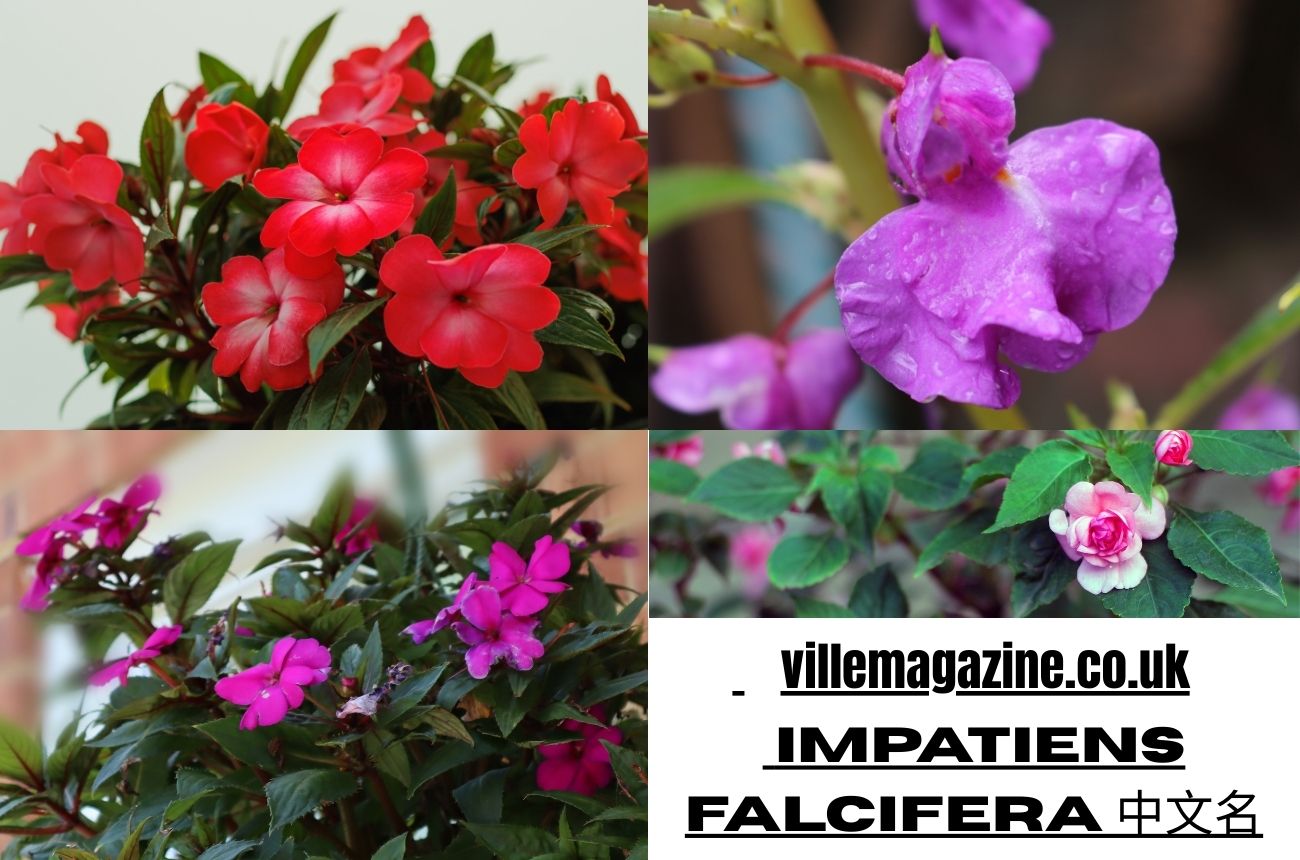General
Impatiens falcifera 中文名: Balsaminaceae Plants Flowers

When exploring the world of flowering plants, the family Balsaminaceae is one of the most captivating due to its rich diversity, colorful blooms, and ecological importance. Among its many species, Impatiens falcifera stands out as a unique plant with striking morphological features and a fascinating cultural identity. Known in Chinese as “镰瓣凤仙花” (Lián bàn fèng xiān huā), this plant has drawn the attention of botanists, horticulturalists, and flower enthusiasts worldwide.
In this article, we will provide a detailed overview of Impatiens falcifera 中文名, its taxonomic identity, botanical characteristics, native distribution, ecological importance, and newly discovered insights from recent botanical studies. By the end, readers will not only understand the meaning of its Chinese name but also appreciate its place within the Balsaminaceae family and its relevance in modern plant studies.
What Is Impatiens falcifera?
Impatiens falcifera is a flowering plant belonging to the family Balsaminaceae, which contains about 1,000 species of flowering herbs widely distributed in Asia, Africa, and North America. The species was first described by Joseph Dalton Hooker, a renowned British botanist, in the 19th century.
The plant is an annual herb that grows naturally in the Himalayan regions, thriving at altitudes between 2300 and 2500 meters. It is admired for its delicate yet vibrant flowers, often appearing in shades of pink, purple, and sometimes reddish hues.
The Chinese name 镰瓣凤仙花 (Lián bàn fèng xiān huā) literally translates to “scythe-petaled balsam flower,” referring to the falcate (sickle-shaped) petals that distinguish this species from others in its genus.
Taxonomy and Botanical Classification
-
Kingdom: Plantae
-
Order: Ericales
-
Family: Balsaminaceae
-
Genus: Impatiens
-
Species: Impatiens falcifera Hook.f.
-
中文名 (Chinese Name): 镰瓣凤仙花
This classification highlights its close relation to other ornamental and medicinal species within the Impatiens genus, such as Impatiens balsamina (common garden balsam) and Impatiens walleriana (a popular ornamental plant).
Morphological Characteristics

Stem and Leaves
Impatiens falcifera typically grows between 40 to 90 centimeters in height. The stems are succulent, semi-transparent, and weakly branched. Its leaves are lanceolate to ovate-lanceolate, arranged alternately, and often finely serrated along the margins.
Flowers
The defining feature is its falcate petals—hence the name “falcifera,” derived from the Latin word falx meaning sickle. The flowers appear in clusters, usually borne on axillary racemes. They display shades of pink or purple with unique spurs, attracting pollinators like bees and butterflies.
Fruits and Seeds
The plant produces explosive seed capsules, a characteristic trait of Balsaminaceae. When mature, these capsules burst open at the slightest touch, scattering seeds across the surrounding soil—a mechanism known as ballochory.
The Meaning of Impatiens falcifera 中文名
The Chinese name 镰瓣凤仙花 encapsulates both descriptive morphology and cultural symbolism:
-
镰瓣 (Lián bàn): Refers to the sickle-shaped petal.
-
凤仙花 (Fèng xiān huā): A traditional Chinese term for balsam flowers, symbolizing elegance and resilience.
In Chinese horticultural culture, the word 凤仙花 often connects to beauty, feminine charm, and sometimes medicinal use. Therefore, by naming this species 镰瓣凤仙花, Chinese botanists emphasized both its physical uniqueness and its place in cultural contexts.
Native Habitat and Distribution
Impatiens falcifera thrives primarily in the Eastern Himalayas. Countries of distribution include:
-
India (Sikkim, Arunachal Pradesh)
-
Nepal
-
Bhutan
-
China (Tibet Autonomous Region)
These plants prefer moist, shaded areas, often found near streams, forest margins, and high-altitude meadows. Their ecological adaptation makes them an essential part of montane ecosystems.
Ecological and Cultural Importance
Pollination and Biodiversity
The falcate petals of Impatiens falcifera are believed to play a role in specialized pollination, ensuring visits from long-tongued bees and other specific pollinators. This adaptation enhances biodiversity and supports ecological balance in high-altitude ecosystems.
Traditional Significance
Though not as commonly referenced as Impatiens balsamina, 镰瓣凤仙花 has been noted in local Himalayan traditions. Some communities use its colorful petals for temporary dyes during cultural festivals, while its herbal extracts are studied for mild medicinal properties.
Newly Discovered Information
Recent botanical surveys and genetic studies have provided fresh insights into Impatiens falcifera 中文名:
-
Genetic Diversity: Studies using molecular markers reveal that Impatiens falcifera shares close genetic ties with Impatiens scabrida and Impatiens sulcata. This discovery helps clarify evolutionary patterns in the Himalayan flora.
-
Conservation Concerns: Due to climate change and habitat loss, populations of Impatiens falcifera in certain regions (especially Nepal and Tibet) are shrinking. Botanists recommend ex situ conservation (seed banking and cultivation in botanical gardens) to safeguard its genetic resources.
-
Medicinal Potential: Preliminary phytochemical analyses show that the plant contains flavonoids and phenolic compounds, which may possess anti-inflammatory and antioxidant properties. While research is still in its early stages, this opens potential for pharmaceutical applications.
-
Pollination Studies: Recent field research in Bhutan found that falciform petals enhance pollination efficiency by guiding pollinators directly toward nectar spurs. This unique adaptation demonstrates nature’s precision in evolutionary design.
Impatiens falcifera in Comparison with Other Balsams
Compared to other species in the Balsaminaceae family:
-
Impatiens balsamina (Garden Balsam): Cultivated for ornamental and medicinal uses, widely popular in East Asia.
-
Impatiens walleriana: A commercial bedding plant, found in global horticulture markets.
-
Impatiens falcifera: Less commercial but botanically significant due to its falcate petals and limited high-altitude distribution.
This comparison shows that while Impatiens falcifera may not yet have mainstream horticultural value, its ecological and evolutionary significance is remarkable.
Conservation and Future Prospects
Given its limited range, 镰瓣凤仙花 requires active conservation. Climate warming threatens to shift Himalayan vegetation belts, pushing species like Impatiens falcifera into narrower ranges. Botanists emphasize:
-
Habitat protection in Himalayan reserves.
-
Seed banks for long-term genetic preservation.
-
Public awareness campaigns highlighting its uniqueness and ecological role.
The plant’s potential in ornamental breeding programs and phytomedicine also makes it a candidate for further research and cultivation beyond its native regions.
Conclusion
The journey of understanding Impatiens falcifera 中文名 (镰瓣凤仙花) highlights not only its botanical charm but also its ecological, cultural, and potential medicinal significance. As part of the diverse Balsaminaceae family, this species enriches Himalayan biodiversity while offering new pathways for scientific exploration.
By protecting and studying Impatiens falcifera, humanity gains insights into evolutionary biology, conservation needs, and even potential health benefits. For researchers, horticulturalists, and nature lovers alike, 镰瓣凤仙花 is more than just a plant—it is a symbol of resilience, adaptation, and beauty.

-

 Celebrity5 months ago
Celebrity5 months agoTrey Kulley Majors: The Untold Story of Lee Majors’ Son
-

 Celebrity5 months ago
Celebrity5 months agoChristina Erika Carandini Lee: A Life of Grace, Heritage, and Privacy
-

 Celebrity5 months ago
Celebrity5 months agoJamie White-Welling: Bio, Career, and Hollywood Connection Life with Tom Welling
-

 Celebrity4 months ago
Celebrity4 months agoNick Schmit? The Man Behind Jonathan Capehart Success















